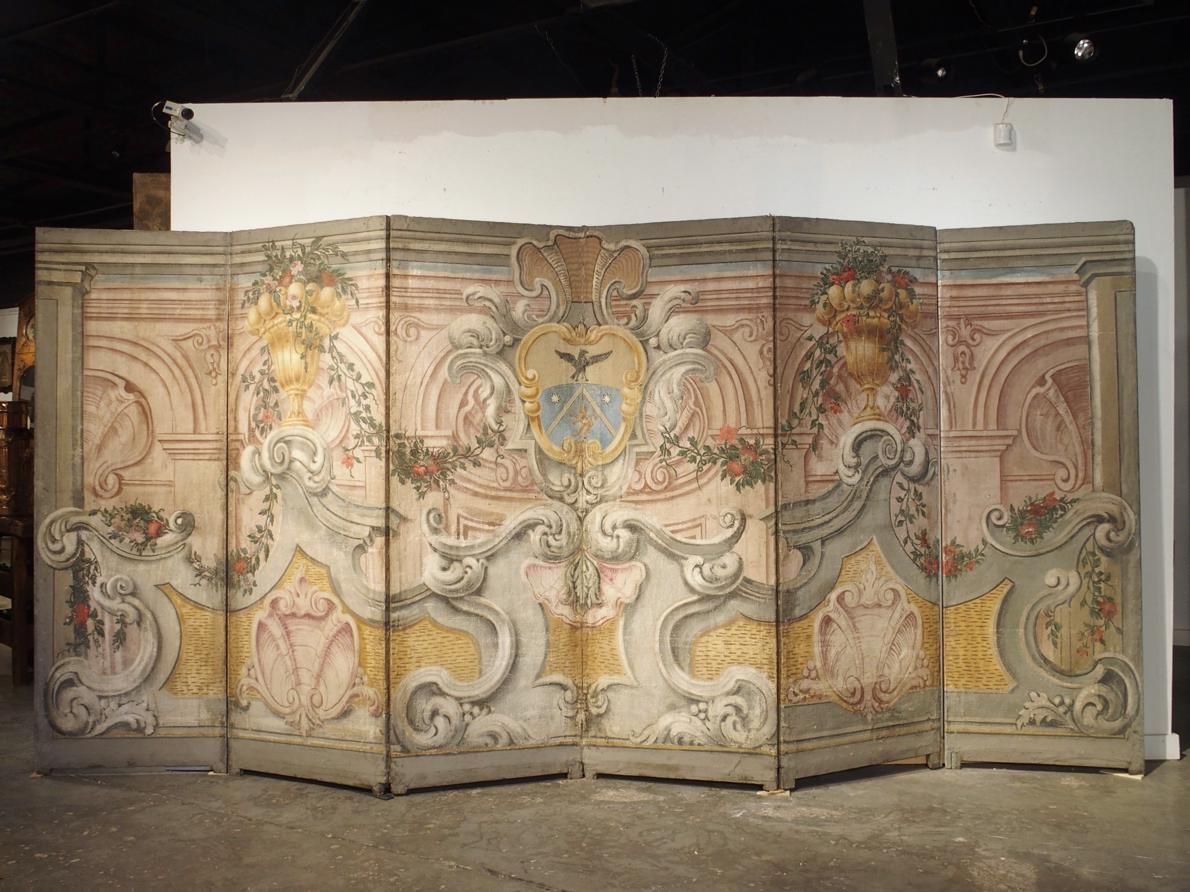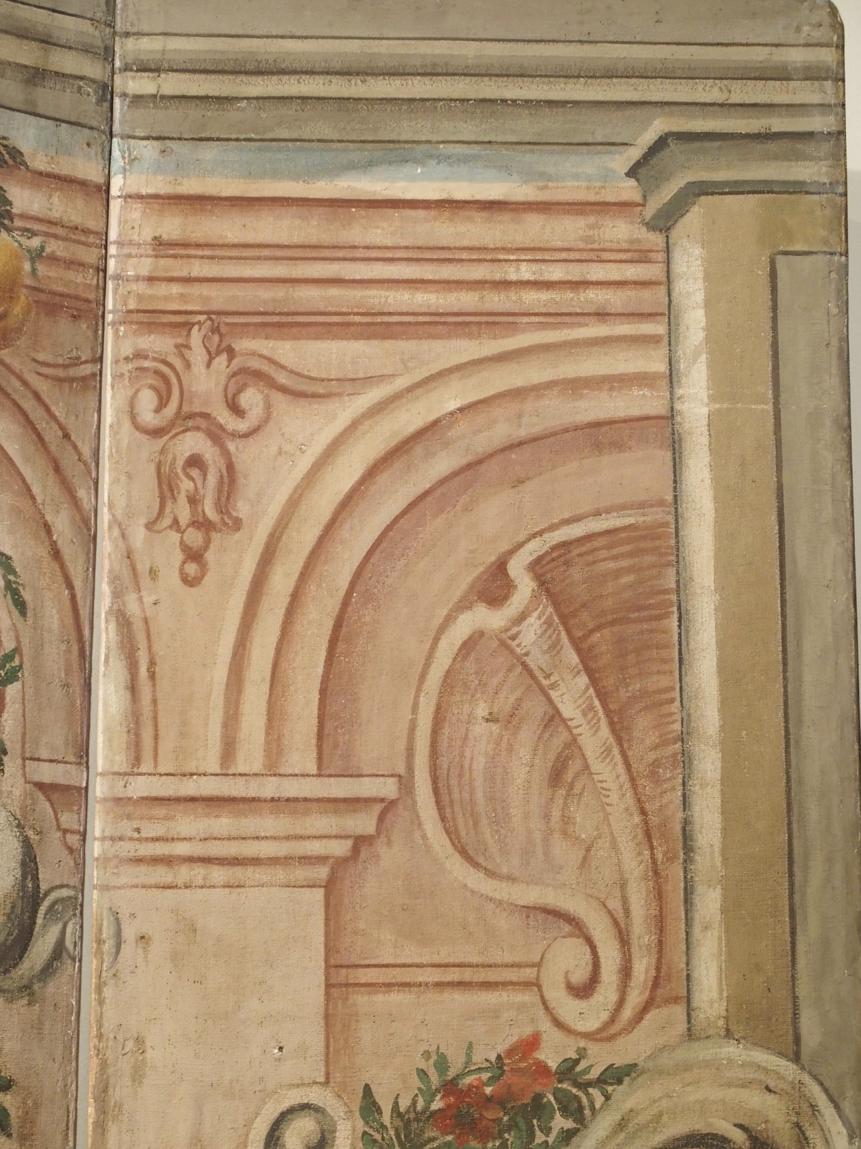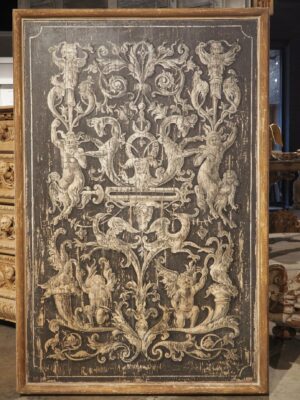This six panel Italian screen is from the Baroque period, circa 1700. The four central panels have been affixed to a foldable frame, while the two outer panels are detached. When all six panels are placed side-by-side, the length of the screen is over 13 feet.
Gray, gold and rose are the dominant colors, while light blue, red, and green are used as accent colors. The central decorative element of the screen is a family crest, composed of a scrolled gold escutcheon with a split color background. The beige upper section of the shield has a recursant (head turned to the left side) black eagle preparing to take flight (rousant). The light blue lower section is divided by a gray chevron that is flanked by two white mullet stars with eight points. Beneath the point of the chevron is a rampant lion. The medallion is part of a larger cartouche that also contains a stylized shell and rinceaux of curled leaves. The coat of arms pertains to the notable Italian family, Andreoli, which dates to 1150 and was prevalent in northeastern Italy, specifically Venice. Members of the family owned many castles in the region and became nobility in 1210. Notable family members from later centuries include Giorgio Andreoli, perhaps the most important Italian potter of the Renaissance, and Bishop Camillo Andrea, of the Milan branch of the family.
The cartouche sits on top of an ornate trompe l’œil stone plinth, which is typical Italian Baroque. It is adorned with scrolls, fruited leaves, a rocaille shell, and a yellow and brown diapered background. On both sides of the plinth are two larger pedestals embellished with similar motifs. Flowering vines that span most of the width of the screen emanate from gold gadrooned urns that sit on top of each pedestal. The background is a series of rose-colored niches with scallop shell tops. Partial gray moldings and columns serve as the screen’s borders.
Paneled screens were first used at the end of the 16th century as ways to block drafts or offer protection from prying eyes. They can also be used to divide rooms, but a piece such as this will make its biggest impact hung on a wall as a piece of art (as the previous owners have done by detaching the side panels). The colorful and exuberant architectural theme is highly unusual compared to most antique screens on the market today. With a combined length of around 13 feet, this one of a kind antique screen will be the focal point of any room.
The detached panels are both 26 3/8 inches wide. The central section of the screen (that consists of the four attached panels) has a width of 105 3/8.
CONDITION: Left and right panels have been separated from center section (was recently hung as art on a grand wall). Some minor losses and buildup to panels. Old repair marks are visible. Hooks mounted on the back for hanging purposes. Beautiful old condition with minor holes in canvas. Please inspect photos.
































